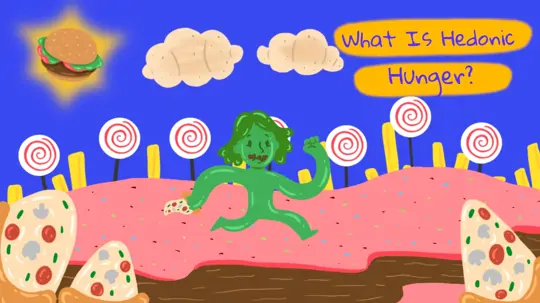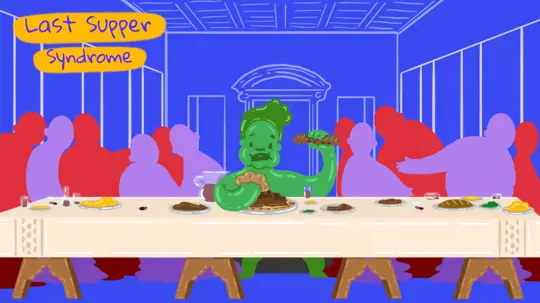
Start feeling better today!
Connect with your therapist today and take control of your life like our 850.000 happy clients.
Get StartedDemystifying Panic Attacks
Picture yourself in a seemingly ordinary situation, when suddenly, out of nowhere, you feel like you're suffocating. It's as if your body is turning against you, and you're completely caught off guard.
As you struggle to breathe, you instinctively freeze and start taking quick, shallow breaths, unsure of what's happening. You might be convinced that you're facing a physical problem, but in reality, psychological factors could be at the root of this intense panic, even when your body is otherwise healthy.
Anxiety is a normal part of life, and we experience it for various reasons and at different levels of intensity. Each person's experience of anxiety, as well as their coping mechanisms, are unique to them and the situation. Within this context, panic attacks can be described as intense and sudden bouts of anxiety1.
The unpredictable and unusual nature of panic attacks can lead people to mistake them for physical disorders. To avoid experiencing another attack, people may try to steer clear of potential triggers. Unfortunately, this avoidance behavior can create a vicious cycle that only exacerbates panic attacks. The key to breaking this cycle is recognizing the symptoms of a panic attack and addressing them accordingly.
What are Panic Attacks?
Panic attacks are sudden episodes of intense fear or discomfort that can arise unexpectedly, often without a clear trigger. During these attacks, individuals may experience a range of physical and psychological symptoms. Although panic attacks are primarily rooted in psychological factors, their symptoms can feel very real and physically distressing. Recognizing and understanding these episodes can be the first step towards managing and overcoming them.
Symptoms of Panic Attacks
The most common symptom of a panic attack is intense heart palpitations3. These heart palpitations, which occur at the start of panic attacks, can be so severe that the person may believe they are having a heart attack. As a result, one of the most frequently asked questions by people who have panic attacks is whether or not they can be fatal.

In addition to heart palpitations, other panic attack symptoms that occur during a panic attack can make the person feel that they are facing a major illness:4.
- Difficulty breathing
- A feeling of suffocation
- Rapid heartbeat
- Breathing too fast
- Sweating
- Tingling sensations in the hands and feet
- Dizziness
- Nausea
Unfortunately, the first thing that comes to mind is not that it could be psychological. People who have panic attacks believe they are suffering from a heart condition or a stroke. Because all of the symptoms are felt physically, it is understandable that a physiological disorder is the first thing that comes to mind. Finding the true cause of the panic attack and allowing the person to gain insight, on the other hand, are critical for reducing panic attacks.
What Causes Panic Attacks?
Negative emotions are one of the many factors that contribute to panic attacks. Fear, sadness, hostility, anxiety, and dissatisfaction with oneself are all examples of negative effects that can lead to a panic attack5.
In relation to this, genetic factors play a role among the causes of panic attacks in panic disorder6. Assume that we are introverted and uneasy in unfamiliar environments due to our innate disposition and temperament traits. As a result, we may have experienced distress in unfamiliar environments since childhood and may be prone to avoidance and escapism behaviors.
Besides genetic factors, losses and trauma in both childhood and adulthood form the basis for panic attacks7.
Losses, particularly in childhood, and separation anxiety reduce an individual's psychological resilience to similar losses in adulthood8. This causes the individual to have panic attacks, which are also defined as anxiety attacks, after events that cause intense anxiety.
How to Overcome the Attacks
To create a road map for overcoming a panic attack, it is necessary to first explain how to measure a panic attack. It is possible to measure the factors that cause panic attacks in three groups:9.
- Verbal-Cognitive Measures
- Motor Movement / Behavioral Measurements
- Psychophysiological Measurements
The person is expected to express their inner experience in the verbal-cognitive measurement method. In this way, the form and severity of the symptoms can be determined. Motor behaviors, on the other hand, represent the avoidance and escape behaviors that a person exhibits when they are afraid of having a panic attack.
It is critical to observe our behaviors, also known as motor movements, in order to determine the cause of the panic attack. Finally, psychophysiological measurements can be used to track the physiological changes that occur during a panic attack. So, how do panic attacks go away?
After determining the symptoms of a panic attack, the severity of these symptoms, and the cause of their occurrence, it is necessary to take action in various ways. To begin, it is critical to emphasize that the symptoms are not of physiological origin and that the person is not in imminent danger of death.
It is necessary to seek psychological help from a therapist in order to analyze the underlying psychological causes of recurrent panic attacks. There are things to do during a panic attack in addition to what can be done in the long run. Standing in the best position for the person, regulating breathing, and keeping the mind busy by talking about something other than a panic attack all help to alleviate symptoms during a panic attack10.
Panic Disorder
Panic attacks that do not resolve and become more frequent over time are called "panic disorder." The most important criterion for a panic disorder diagnosis is having panic attacks that occur unexpectedly and for no reason11.
Individuals suffering from panic disorder may avoid a location or situation due to a panic attack. For example, a person who has a panic attack while in an elevator may believe that the elevator is what caused the attack and may avoid elevators in order to protect themselves from future attacks.
Agoraphobia may develop in people who avoid panic attacks by associating them with a specific location or situation, in addition to panic disorder. Agoraphobia is the fear of being alone, being in a crowd, or being in situations that cause intense anxiety12.
Although panic attacks are common in people who have panic disorder, they may not accompany the diagnosis in some people. The presence of agoraphobia and panic disorder impairs a person's quality of life and functionality. Even if short-term solutions are used during panic attacks, psychotherapy can be very beneficial in the long run in order to improve the individual's quality of life and mental health.
Sources
- Silove, D., & Manicavasagar, V. (2016). Panic attacks and agoraphobia. Kuralsız Publishing Education Consultancy Ltd Sti.
- Schmidt, N. B., Zvolensky, M. J., & Maner, J. K. (2006). Anxiety sensitivity: Prospective prediction of panic attacks and Axis I pathology. Journal of psychiatric research, 40(8), 691-699.
- Krystal, J. H., Woods, S. W., Hill, C. L., & Charney, D. S. (1991). Characteristics of panic attack subtypes: Assessment of spontaneous panic, situational panic, sleep panic, and limited symptom attacks. Comprehensive Psychiatry, 32(6), 474-480.
- Falsetti, S. A., & Resnick, H. S. (1997). Frequency and severity of panic attack symptoms in a treatment seeking sample of trauma victims. Journal of Traumatic Stress, 10(4), 683-689.
- Hayward, C., Killen, J. D., Kraemer, H. C., & Taylor, C. B. (2000). Predictors of Panic Attacks in Adolescents. Journal of the American Academy of Child & Adolescent Psychiatry, 39(2), 207–214.
- Smoller, J. W., Gardner‐Schuster, E., & Covino, J. (2008). The genetic basis of panic and phobic anxiety disorders. In American Journal of Medical Genetics Part C: Seminars in Medical Genetics (Vol. 148, No. 2, pp. 118-126). Hoboken: Wiley Subscription Services, Inc., A Wiley Company.
- Zeanah, C. H. (1988). Atypical panic attacks and lack of resolution of mourning. General hospital psychiatry, 10(5), 373-377.
- Poole, J. C., Dobson, K. S., & Pusch, D. (2017). Anxiety among adults with a history of childhood adversity: Psychological resilience moderates the indirect effect of emotion dysregulation. Journal of affective disorders, 217, 144-152.
- Ley, R. (1985). Blood, breath, and fears: A hyperventilation theory of panic attacks and agoraphobia. Clinical Psychology Review, 5(4), 271–285. doi:10.1016/0272-7358(85)90008-x
- Pollard, C. A., & Lewis, L. M. (1989). Managing panic attacks in emergency patients. The Journal of emergency medicine, 7(5), 547-552.
- Tukel, R. (2002). panic disorder. Journal of Clinical Psychiatry, 5(Supp: 3), 5-13.
- Rachman, S. (1984). Agoraphobia—a safety-signal perspective. Behavior Research and Therapy, 22(1), 59-70.





